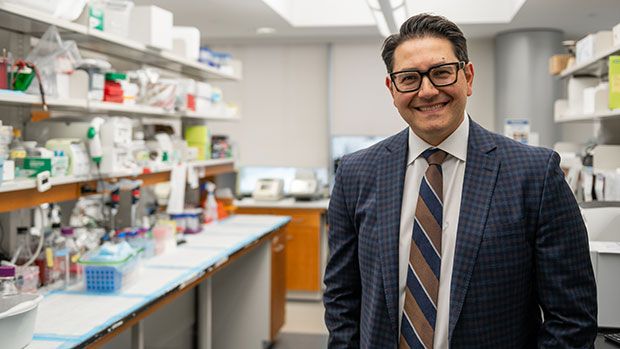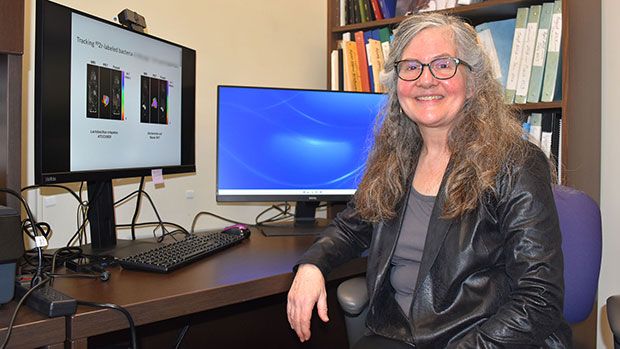Children’s nutrition influenced by local neighbourhoods
LONDON, ON - Dr. Jason Gilliland, a Scientist at Children’s Health Research Institute, Lawson Health Research Institute and Director of the Human Environments Analysis Laboratory at Western University, is combining health research with geography to understand the connection between children’s nutrition and their local neighbourhoods. In an innovative study, Dr. Gilliland and his team used GPS technology to provide evidence that adolescents’ exposure to junk food outlets during trips to and from school affects their likelihood of making a junk food purchase.
The study followed 654 students, aged 9 to 13, from across London and Middlesex County, Ontario. Each student was given a portable GPS logger to track their trips to and from school over the course of two weeks. The GPS logger identified each time a student entered within 50 metres of a junk food outlet, those stores or restaurants where students might make an unhealthy food purchase, and recorded their time exposed. Each student was also given an activity diary to record any junk food purchases during those trips.
Results showed that exposure to junk food outlets had a significant effect on a child’s likelihood of making a junk food purchase. Of all trips where a child was exposed to a junk food outlet, 1 in 20 included a junk food purchase. The length of time that a child was exposed significantly increased their chances of making a purchase, increasing from 1.7% at less than one minute of exposure to 16% at 16 to 17 minutes of exposure. In addition, trips home from school were much more likely to be associated with a junk food purchase than trips to school.
“This study provides strong evidence that a child’s surrounding food environment affects their food purchasing behaviour,” says Dr. Gilliland, also Director of the Urban Development Program and Professor in the Department of Geography at Western University. “Unlike past studies, these results provide strong accuracy through the use of GPS technology to more precisely capture exposure.”
Dr. Gilliland’s team also found that trips made by car were much more likely to result in a junk food purchase than those made by an active mode of travel. These odds increased significantly with length of exposure. Exposure while riding the bus did not result in a junk food purchase, due to limited mobility and school board restrictions.
“These results show that trips by car, under adult supervision, are more likely to result in a junk food purchase,” says Dr. Gilliland. “This suggests the powerful influence that parents can have on their children’s eating habits and the need to be mindful of this. It also suggests that an active mode of travel may be healthier, not only for physical activity, but also for nutrition.”
The study found that trips made by females were more likely to result in a junk food purchase at all levels of exposure than those made by males. Females were 2.5 times more likely than males to make a junk food purchase after 5 minutes of exposure and 3 times more likely to make a purchase after 15 minutes of exposure. Dr. Gilliland suggests this may be due to female adolescents having more money in the Canadian culture of babysitting, but also cites the importance of health promotion campaigns that target males and females separately.
“Overall, this study’s findings have significant implications for municipal planners, school board officials, public health officials and other decision makers,” says Dr. Gilliland. “This provides clear evidence that bylaws and policies should be enacted that restrict the concentration of junk food outlets around schools.”
In addition, the study highlights the need to educate adolescents in making healthy food choices. One way Dr. Gilliland and his colleagues are working to make healthy eating attractive is through the use of a smartphone app – SmartAPPetite. Dr. Gilliland created this app to remove barriers to finding local and healthy foods in southwestern Ontario. “We may not be able to change the landscape of our food environments overnight,” says Dr. Gilliland. “But we can work to promote healthy eating in innovative ways.”
The study, “Using GPS and activity tracking to reveal the influence of adolescents’ food environment exposure on junk food purchasing”, is published in a special issue on “Retail Food Environments in Canada” for the Canadian Journal of Public Health. This special issue includes a foreward from the Honourable Jane Philpott, Canada’s Minister for Health, stating the federal government’s commitment to supporting Canadians in making healthy, informed food choices. The study was jointly funded by the Canadian Institutes of Health Research and the Heart and Stroke Foundation of Canada, with seed funding from the Social Sciences and Humanities Research Council of Canada. Additional support was provided by Children’s Health Foundation and Children’s Health Research Institute, Lawson Health Research Institute.
-30-
See all Lawson Media Releases
Western delivers an academic experience second to none. Since 1878, The Western Experience has combined academic excellence with life-long opportunities for intellectual, social and cultural growth in order to better serve our communities. Our research excellence expands knowledge and drives discovery with real-world application. Western attracts individuals with a broad worldview, seeking to study, influence and lead in the international community.
Lawson Health Research Institute is one of Canada’s top hospital-based research institutes, tackling the most pressing challenges in health care. As the research institute of London Health Sciences Centre and St. Joseph’s Health Care London, our innovation happens where care is delivered. Lawson research teams are at the leading-edge of science with the goal of improving health and the delivery of care for patients. Working in partnership with Western University, our researchers are encouraged to pursue their curiosity, collaborate often and share their discoveries widely. Research conducted through Lawson makes a difference in the lives of patients, families and communities around the world. To learn more, visit www.lawsonresearch.ca.
Communications Consultant & External Relations
Lawson Health Research Institute
T: 519-685-8500 ext. 75664
C. 519-619-3872
@email




